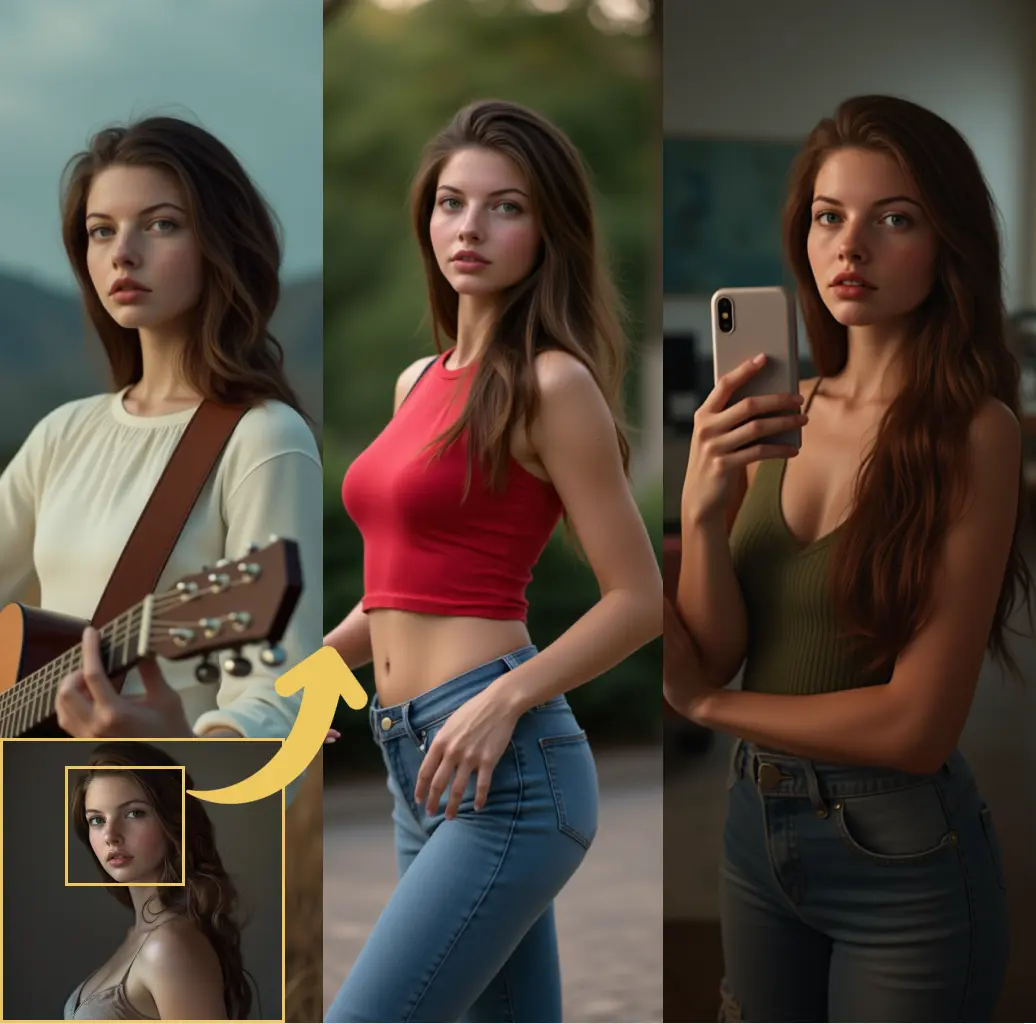ComfyUI Node: Flux Inpainting
FluxInpainting
CategoryInpainting
duhaifeng (Account age: 505days) Extension
ComfyUI-Flux-Inpainting Latest Updated
2025-02-06 Github Stars
0.03K
How to Install ComfyUI-Flux-Inpainting
Install this extension via the ComfyUI Manager by searching for ComfyUI-Flux-Inpainting- 1. Click the Manager button in the main menu
- 2. Select Custom Nodes Manager button
- 3. Enter ComfyUI-Flux-Inpainting in the search bar
Visit ComfyUI Online for ready-to-use ComfyUI environment
- Free trial available
- 16GB VRAM to 80GB VRAM GPU machines
- 400+ preloaded models/nodes
- Freedom to upload custom models/nodes
- 200+ ready-to-run workflows
- 100% private workspace with up to 200GB storage
- Dedicated Support
Flux Inpainting Description
Enhance image inpainting with seamless integration and high precision restoration.
Flux Inpainting:
FluxInpainting is a sophisticated node designed to enhance the process of image inpainting, which involves filling in missing or corrupted parts of an image. This node leverages advanced techniques to seamlessly integrate new content into existing images, ensuring that the inpainted areas blend naturally with the surrounding pixels. The primary goal of FluxInpainting is to provide artists and designers with a powerful tool that can restore or modify images with high precision and minimal artifacts. By utilizing state-of-the-art models and algorithms, FluxInpainting offers a robust solution for tasks such as repairing damaged photographs, removing unwanted objects, or creatively altering images. Its capabilities are particularly beneficial for AI artists who seek to maintain the aesthetic integrity of their work while making significant modifications.
Flux Inpainting Input Parameters:
flux_dir
The flux_dir parameter specifies the directory path where the main Flux model files are located. This parameter is crucial as it directs the node to the necessary resources required for inpainting operations. The correct path ensures that the model can be loaded and executed properly, impacting the quality and accuracy of the inpainting results. There are no specific minimum or maximum values, but it must be a valid directory path.
flux_nf4_dir
The flux_nf4_dir parameter indicates the directory path for the NF4 variant of the Flux model. This variant is optimized for certain inpainting tasks, and specifying the correct directory is essential for leveraging its capabilities. Like flux_dir, this parameter must be a valid directory path, and it plays a significant role in the node's performance and output quality.
four_bit
The four_bit parameter is a boolean flag that determines whether the model should operate in a four-bit precision mode. This mode can significantly reduce the computational load and memory usage, making the inpainting process more efficient. The default value is typically true, but it can be set to false if higher precision is required at the cost of increased resource consumption.
step_call_back
The step_call_back parameter is a function that is called at the end of each processing step. It is used to update progress bars or perform other actions during the inpainting process. This parameter is important for monitoring the progress and ensuring that the node operates smoothly without interruptions. It does not have a specific value range but must be a valid callable function.
vae
The vae parameter refers to the Variational Autoencoder model used in conjunction with the Flux model. This parameter is optional but can enhance the inpainting results by providing additional generative capabilities. It must be a valid VAE model object if used, and it can impact the quality and style of the inpainted areas.
Flux Inpainting Output Parameters:
inpainted_image
The inpainted_image parameter is the primary output of the FluxInpainting node. It represents the final image after the inpainting process has been completed. This output is crucial as it contains the modified image with the missing or corrupted areas filled in seamlessly. The quality and accuracy of this output depend on the input parameters and the models used during the process.
Flux Inpainting Usage Tips:
- Ensure that the
flux_dirandflux_nf4_dirparameters are set to valid directory paths containing the necessary model files to avoid loading errors. - Utilize the
four_bitparameter to optimize performance, especially when working with large images or limited computational resources. - Monitor the inpainting process using the
step_call_backfunction to track progress and handle any potential issues promptly.
Flux Inpainting Common Errors and Solutions:
"Model files not found in specified directory"
- Explanation: This error occurs when the
flux_dirorflux_nf4_dirpaths do not point to valid directories containing the required model files. - Solution: Verify that the directory paths are correct and that the necessary model files are present in the specified locations.
"Invalid step_call_back function"
- Explanation: This error indicates that the
step_call_backparameter is not a valid callable function. - Solution: Ensure that the
step_call_backparameter is set to a valid function that can be called during the inpainting process.
"Insufficient memory for model execution"
- Explanation: This error may occur if the node is unable to allocate enough memory to load and execute the model, especially when not using the
four_bitmode. - Solution: Enable the
four_bitparameter to reduce memory usage or increase the available memory resources on your system.
Flux Inpainting Related Nodes
RunComfy is the premier ComfyUI platform, offering ComfyUI online environment and services, along with ComfyUI workflows featuring stunning visuals. RunComfy also provides AI Playground, enabling artists to harness the latest AI tools to create incredible art.

